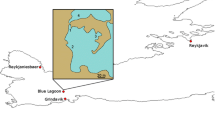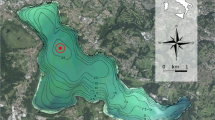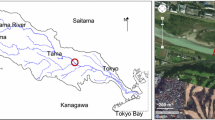Abstract
In this study, the 454 pyrosequencing technology was used to analyze the DNA of the Microcystis aeruginosa symbiosis system from cyanobacterial algal blooms in Taihu Lake, China. We generated 183 228 reads with an average length of 248 bp. Running the 454 assembly algorithm over our sequences yielded 22 239 significant contigs. After excluding the M. aeruginosa sequences, we obtained 1 322 assembled contigs longer than 1 000 bp. Taxonomic analysis indicated that four kingdoms were represented in the community: Archaea (n = 9; 0.01%), Bacteria (n = 98 921; 99.6%), Eukaryota (n = 373; 3.7%), and Viruses (n = 18; 0.02%). The bacterial sequences were predominantly Alphaproteobacteria (n = 41 805; 83.3%), Betaproteobacteria (n = 5 254; 10.5%) and Gammaproteobacteria (n = 1 180; 2.4%). Gene annotations and assignment of COG (clusters of orthologous groups) functional categories indicate that a large number of the predicted genes are involved in metabolic, genetic, and environmental information processes. Our results demonstrate the extraordinary diversity of a microbial community in an ectosymbiotic system and further establish the tremendous utility of pyrosequencing.
Similar content being viewed by others
References
Aleya L, Michard M, Khattabi H, Devaux J. 2006. Coupling of the biochemical composition and calorific ocntent of zooplankters with the Microcystis aeruginosa proliferation in a highly eutrophic reservoir. Environ. Technol., 27(11): 1 181–1 190.
Baptista M S, Vasconcelos M T. 2006. Cyanobacteria metal interactions: requirements, toxicity, and ecological implications. Crit. Rev. Microbiol., 32(3): 127–137.
Berg K A, Lyra C, Sivonen K, Paulin L, Suomalainen S, Tuomi P, Rapala J. 2009. High diversity of cultivable heterotrophic bacteria in association with cyanobacterial water blooms. Isme Journal, 3(3): 314–325.
Bourne D G, Riddles P, Jones G J, Smith W, Blakeley R L. 2001. Characterisation of a gene cluster involved in bacterial degradation of the cyanobacterial toxin microcystin LR. Environ. Toxicol., 16(6): 523–534.
Eiler A, Bertilsson S. 2004. Composition of freshwater bacterial communities associated with cyanobacterial blooms in four Swedish lakes. Environmental Microbiology, 6(12): 1 228–1 243.
Ewing B, Green P. 1998. Base-calling of automated sequencer traces using phred. II. Error probabilities. Genome Res., 8(3): 186–194.
Fuhrman J A. 1999. Marine viruses and their biogeochemical and ecological effects. Nature, 399(6 736): 541–548.
Gordon D, Abajian C, Green P. 1998. Consed: a graphical tool for sequence finishing. Genome Res., 8(3): 195–202.
Harada K, Imanishi S, Kato H, Mizuno M, Ito E, Tsuji K. 2004. Isolation of Adda from microcystin-LR by microbial degradation. Toxicon., 44(1): 107–109.
Ho L, Hoefel D, Saint C P, Newcombe G. 2007. Isolation and identification of a novel microcystin-degrading bacterium from a biological sand filter. Water Res., 41(1): 4 685–4 695.
Huber H, Hohn M J, Rachel R, Fuchs T, Wimmer V C, Stetter K O. 2002. A new phylum of Archaea represented by a nanosized hyperthermophilic symbiont. Nature, 417(6 884): 63–67.
Ishii H, Nishijima M, Abe T. 2004. Characterization of degradation process of cyanobacterial hepatotoxins by a gram-negative aerobic bacterium. Water Res., 38(11): 2 667–2 676.
Ishii K. Fukui M. 2001. Optimization of annealing temperature to reduce bias caused by a primer mismatch in multitemplate PCR. Applied and Environmental Microbiology, 67(8): 3 753–3 755.
Jiang L J, Yang L Y, Xiao L, Shi X L, Gao G, Qin B. 2007. Quantitative studies on phosphorus transference occuring between Microcystis aeruginosa and its attached bacterium (Pseudomonas sp.). Hydrobiologia, 581: 161–165.
Juliana C R, Renan B D, Luis F D B C, Eduardo V C, Edmar C S, Andrea M A N. 2009. Molecular identification and dynamics of microbial communities in reactor treating organic household waste. Appl. Microbiol. Biotechnol., 84(4): 777–789.
Kroes I, Lepp P W, Relman D A. 1999. Bacterial diversity within the human subgingival crevice. Proceedings of the National Academy of Sciences of the United States of America, 96(25): 14 547–14 552.
Mackenzie C, Eraso J M, Choudhary M, Roh J H, Zeng X H, Bruscella P, Puskas A, Kaplan S. 2007. Postgenomic adventures with Rhodobacter sphaeroides. Annual Review of Microbiology, 61: 283–307.
Maruyama T, Kato K, Yokoyama A, Tanaka T, Hiraishi A, Park H D. 2003. Dynamics of microcystin-degrading bacteria in mucilage of Microcystis. Microbial Ecology, 46: 279–288.
Paerl H. 2008. Nutrient and other environmental controls of harmful cyanobacterial blooms along the freshwater-marine continuum. Adv. Exp. Med. Biol., 619: 217–237.
Petrie L, North N N, Dollhopf S L, Balkwill D L, Kostka J E. 2003. Enumeration and characterization of iron(III)-reducing microbial communities from acidic subsurface sediments contaminated with uranium(VI). Applied and Environmental Microbiology, 69(12): 7 467–7 479.
Pope P B, Patel B K. 2008. Metagenomic analysis of a freshwater toxic cyanobacteria bloom. FEMS Microbiol. Ecol., 64(1): 9–27.
Saito T, Okano K, Park H D, Itayama T, Inamori Y, Neilan B A, Burns B P, Sugiura N. 2003. Detection and sequencing of the microcystin LR-degrading gene, mlrA, from new bacteria isolated from Japanese lakes. FEMS Microbiol. Lett., 229(2): 271–276.
Sedmak B, Elersek T. 2005. Microcystins induce morphological and physiological changes in selected representative phytoplanktons. Microb. Ecol., 50(4): 298–305.
Valeria A M, Ricardo E J, Stephan P, Alberto W D. 2006. Degradation of Microcystin-RR by Sphingomonas sp. CBA4 isolated from San Roque reservoir (Cordoba — Argentina). Biodegradation, 17(5): 447–455.
Wang G C Y, Wang Y. 1997. Frequency of formation of chimeric molecules is a consequence of PCR coamplification of 16S rRNA genes from mixed bacterial genomes. Applied and Environmental Microbiology, 63(12): 4 645–4 650.
Webster N S, Wilson K J, Blackall L L, Hill R T. 2001. Phylogenetic diversity of bacteria associated with the marine sponge Rhopaloeides odorabile. Applied and Environmental Microbiology, 67(1): 434–444.
Weng L, Rubin E M, Bristow J. 2006. Application of sequence-based methods in human microbial ecology. Genome Research, 16: 316–322.
Yoshida T, Takashima Y, Tomaru Y, Shirai Y, Takao Y, Hiroishi S, Nagasaki K. 2006. Isolation and characterization of a cyanophage infecting the toxic cyanobacterium Microcystis aeruginosa. Applied and Environmental Microbiology, 72(2): 1 239–1 247.
Zhang X, Hu H Y, Men Y J, Yang J, Christoffersen K. 2009. Feeding characteristics of a golden alga (Poterioochromonas sp.) grazing on toxic cyanobacterium Microcystis aeruginosa. Water Res., 43(12): 2 953–2 960.
Zurawell R W, Chen H R, Burke J M, Prepas E E. 2005. Hepatotoxic cyanobacteria: A review of the biological importance of microcystins in freshwater environments. Journal of Toxicology and Environmental Health-Part B-Critical Reviews, 8(1): 1–37.
Author information
Authors and Affiliations
Corresponding author
Additional information
Supported by the Knowledge Innovation Program of Chinese Academy of Sciences (No. KSCX2-YW-G-073)
LI Nan and ZHANG Lei contributed equally to this work.
Rights and permissions
About this article
Cite this article
Li, N., Zhang, L., Li, F. et al. Metagenome of microorganisms associated with the toxic Cyanobacteria Microcystis aeruginosa analyzed using the 454 sequencing platform. Chin. J. Ocean. Limnol. 29, 505–513 (2011). https://doi.org/10.1007/s00343-011-0056-0
Received:
Accepted:
Published:
Issue Date:
DOI: https://doi.org/10.1007/s00343-011-0056-0




